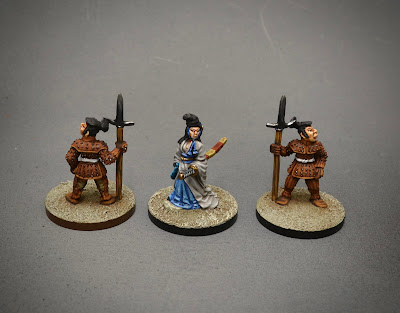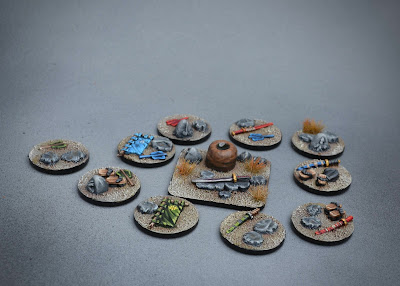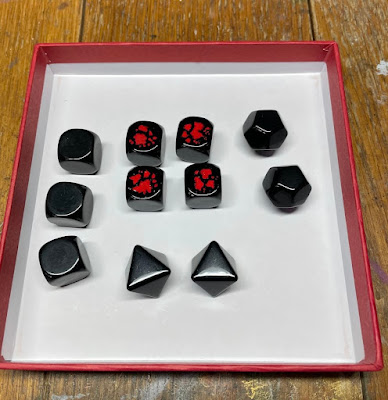********
"They're just the latest fashion. Everyone, and I mean everyone at the Imperial Court has taken a pair of Chinese bodyguards into their retinue. They're just the most adorable addition to the Castle. They're strong, totally unemotional and just completely uninterested in calligraphy or the tea ceremony. They just... stand there and....and stare at me, all day long. I tell you, I feel completely safe with Ping-Xi and Pong-Li in my apartment."
********
As part of Analogue Hobbies Painting Contest XV, I needed to paint up an entry under the title "Lust". This being a family-focused Blog, I was unsure what to prepare. I did have a lovely pair of Games Workshop Chinese (or maybe Japanese) bodyguards based up and undercoated, and a Citadel female Samurai to accompany them. And, Ladies and Gentlemen, the attraction of figures undercoated and ready to paint won the day.
So here we have Ping-Xi and Pong-Li, experienced and no doubt well-travelled Chinese bodyguards brought to the Imperial Court of Japan by Lady Machiko. Ping-Xi, Pong-Li and Lady Machiko should be perfect for another frivolous game of "When the Last Sword is Drawn", my skirmish game of swordplay in medieval and Edō period Japan. Maybe they'll prove to be dedicated and selfless guardians of Lady Machiko's honour.
I also added a 3D-printed large Japanese-style tree to the submission. There was no reason for this, other than it gave me a setting for this post, as well as another new tree for a gaming scenario. And, of course, it allowed me to take some ABBA-style "Knowing Me, Knowing You" photos of Ping-Xi and Pong-Li in front of the tree, looking in different directions before they slaughter each other in a deadly context for Lady Machiko's hand.
I think the sculptor may have been Aly Morrison. How Aly sculpted the studs on the leather armour is probably a secret known only to the Sculpting Gods!
I did remember to paint one base with black edging, and the other in brown edging. Otherwise, Ping-Xi and Pong-Li might get mixed up. I hope Lady Machiko can tell them apart. Or, maybe, its more entertaining if she can't.
And finally, as this is me, here's two more ludicrously self-indulgent character cards to add to our "When the Last Sword is Drawn" card collection. And yes, they are different figures in the Characters' photographs. At least I think they are...!












.jpg)



















